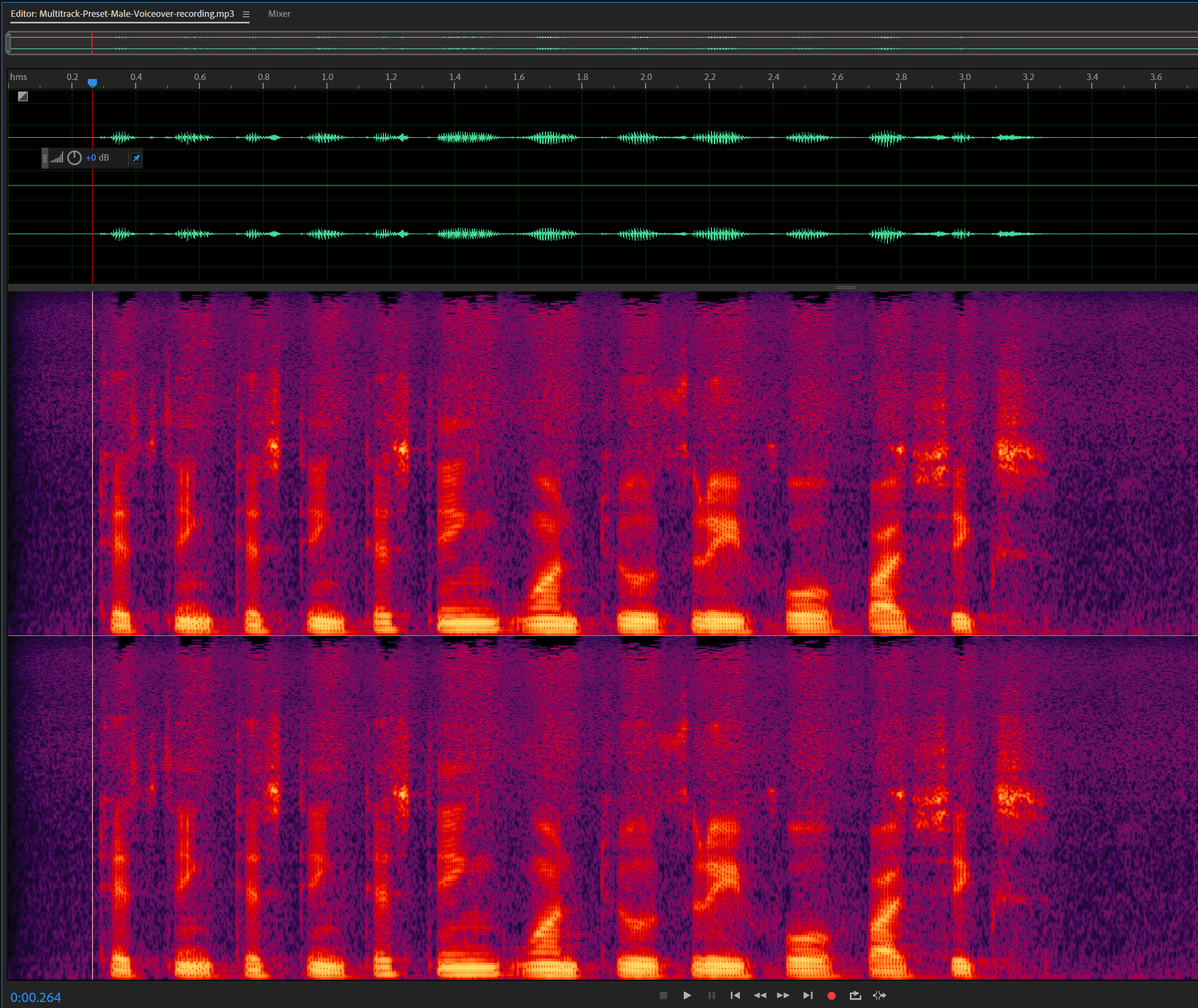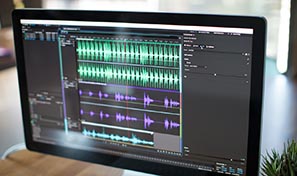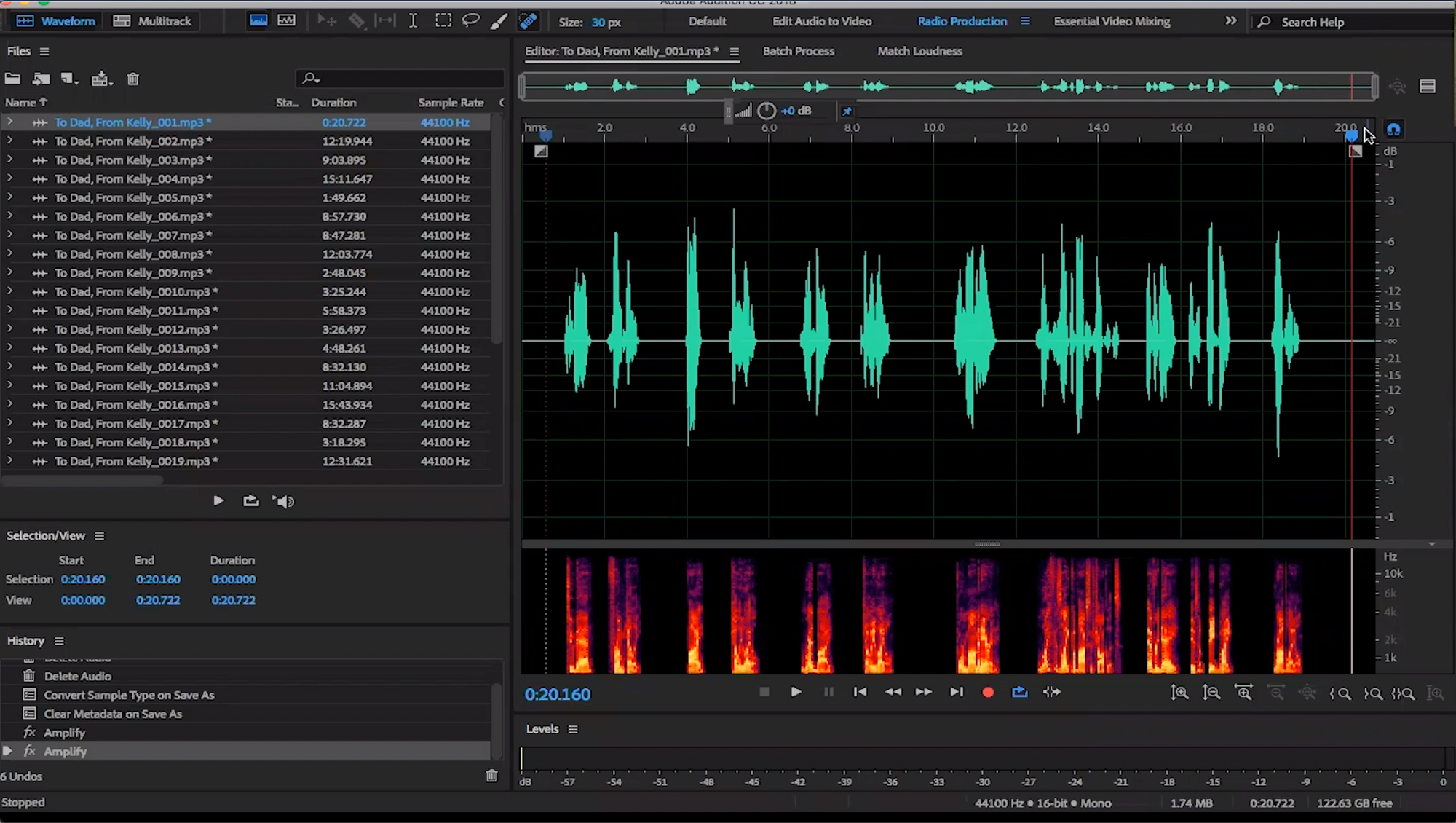Adobe Audition Audio Recording
- Adobe Audition Recording Multitrack
- Adobe Audition Not Recording Audio
- Adobe Audition Recording Audio From Computer
Create, open, or import files in Adobe Audition; Importing with the Files panel; Extracting audio from CDs; Supported import formats; Navigate time and playing audio in Adobe Audition; Recording audio; Monitoring recording and playback levels; Editing audio files. Edit, repair, and improve audio using Essential Sound panel; Generating text-to-speech; Matching loudness across multiple audio files. Record, edit, and apply effects to audio clips, as well as record and adjust multitrack sessions in Adobe Audition and work directly with audio tracks in Adobe Premiere Pro. Cosa serve Get files.
You can download your app from the Creative Cloud website. If prompted, sign in to your Adobe account, then click either Download or Install for your app. For more information, see Download your Creative Cloud apps.
For solutions to a 'failed to install' error, see Error: 'Failed to install' Creative Cloud desktop app. To resolve other download, installation, and update issues, see this download and install troubleshooting guide.
Yes! You can download trial versions of any Creative Cloud app from the Creative Cloud apps catalog. You'll need to sign in with an Adobe ID and password to download a trial. For detailed instructions, see Download and install a Creative Cloud trial.

You can install Audition and other Creative Cloud apps on up to two computers. If you want to install it on a third computer, you need to deactivate it on one of your previous machines. Learn more about activating and deactivating Creative Cloud apps.
Sign in to your Adobe account. Then click Change for Current password and follow the onscreen instructions. Forgot your password? Learn how to reset and change it.
Read these simple solutions to common Adobe ID and sign in issues to regain access to your account.
Follow these Update your credit card and billing information.
Switching Creative Cloud plans is easy. Follow these step-by-step instructions to upgrade or change your plan.
Converting your trial to a paid membership is easy. Follow these step-by-step instructions to upgrade and start your membership.
If you cancel your membership, you still have access to Creative Cloud member free benefits and any files you saved to your device. You won't have access to apps or most services and your cloud storage will be reduced to 2 GB. Learn how to Cancel your Creative Cloud membership and understand the Adobe subscription terms.
Follow the steps in this article to learn how to connect to audio hardware in Audition.
Watch this video to learn how to record an audio file, including how to adjust recording levels and use playback controls.
Watch this tutorial and explore ways to import audio files and browse media.
Different factors can cause recording problems. Try the tips in this article to troubleshoot recording, playback, and monitoring issues.
Select the clips and choose Clip > Match Clip Volume. For more information, see How to match, fade, and mix clip volume.
Yes. Learn how in this video tutorial on manually adjusting audio levels.
Watch this video to learn how to use the Click/Pop Eliminator and DeClicker effects.
Follow this video series to learn how to remove noise from audio files, such as rings and beeps.
Adobe Audition Recording Multitrack
Yes. Learn how in this video, Clean up background noise and reduce hiss.
Follow the steps in this article to learn how to arrange and edit multitrack clips.
You can add various kinds of fades in Audition. Learn how in this video, Add fades to audio with the Audition waveform display.
Follow the easy steps in this article to learn how to copy, cut, paste, and delete audio.
Give singers perfect pitch using the automatic pitch correction tools in Audition. Learn how in this tutorial, Correct pitch automatically.

Adobe Audition Not Recording Audio
Follow this tutorial to learn how to use the Stereo Expander effect to give your audio a wider stereo presence.
Community
Join the conversation.
When you set inputs and outputs for recording and playback in Adobe Audition 3, you have a choice of sound card drivers: an ASIO (Audio Stream In/Out) driver, or the Audition 3.0 Windows Sound driver.
This document describes how to select a driver and how to configure each kind of driver.
Understanding ASIO and Audition Windows Sound drivers
Audition 3.0 Windows Sound is the default driver, but Adobe recommends that you select an ASIO driver.
ASIO is a multichannel protocol that allows compatible software to use the multichannel capabilities of ASIO-compliant sound cards.
Adobe Audition Recording Audio From Computer
The benefits of ASIO include:
- Lower signal latency.
- More efficient audio processing.
- Higher data throughput.
- More accurate channel synchronization.
- Better extensibility of audio hardware.
- Greater flexibility of sample rates, sample formats, and input/output channel mapping for playback and recording.
- The ability to record from two or more inputs simultaneously.
If you are using an ASIO-compliant audio device, then you should download and install an ASIO driver that is specifically designed for that device.
If the device manufacturer does not provide an ASIO driver, then you can install a third-party ASIO driver, such as ASIO4ALL; however, a third-party driver may not support all of the device's features.
If you are not able to obtain an ASIO driver, or if you are not using ASIO-compliant audio devices, then use the Audition 3.0 Windows Sound driver.

Audition 3.0 Windows Sound is an emulated driver which uses the system DirectSound driver.
Audition 3.0 Windows Sound provides no additional device functionality beyond what the DirectSound driver offers. For example, the DirectSound driver may be limited to stereo input and output.
- Click the Edit View, Multitrack View, or Surround Encoder tab.
Note: The Edit View, Multitrack View, and Surround Encoder each have their own driver settings. You must configure driver settings for each view individually. - In the Audio Driver pop-up menu, choose a driver for the sound card you wish to use.
Choose an ASIO driver if one is listed; otherwise, choose Audition 3.0 Windows Sound.
If you chose an ASIO driver in Step 3, then go to Configuring an ASIO driver.
If you chose Audition 3.0 Windows Sound in Step 3, then go to Configuring the Audition 3.0 Windows Sound driver.

The window that appears after you click Control Panel displays the proprietary settings of the ASIO driver that you selected. These setting vary from driver to driver.
For details about these settings, see your sound card's documentation, contact the cardâs manufacturer, or contact the publisher of the driver.
Configuring the Audition 3.0 Windows Sound driver
You will configure the Audition 3.0 Windows Sound driver in the DirectSound Full Duplex Setup window. The options in this window are as follows:

- Device Name
The Device Name column lists all available DirectSound outputs and inputs. To activate or deactivate a port, click the box next to the port. If the option box contains an 'X', then the port is activated.
- Buffer Size [Samples]
The Buffer Size [Samples] column displays the number of samples that will be included in the buffer. The audio buffer is used when audio data is transferred between Audition and the sound card. The default Buffer Size is 2048 samples.
A large buffer ensures that playback occurs without audio dropout or other glitches. However, increasing the buffer size increases the audio data latency which may cause delay between the moment Audition begins sending audio data and the moment it actually reaches the physical output. In general, lowering the buffer size improves playback while increasing it will improve recording, but the goal of setting the buffer should be to find a balance between the two.
To change the Buffer Size [Samples] value, double-click the field and enter a different number of samples.
Note the following Buffer Size guidelines:
- To improve recording performance, lower the buffer size (optimal range is 32 to 256 samples).
- To improve playback performance, increase the buffer size (optimal range is 512 to 2048 samples).
- Offset [Samples]
The Offset [Samples] value affects latency of the input or output signal between multiple sound cards.
To change the Offset [Samples] value, double-click the field and enter a different number of samples.
- Audio Channels, Bits per Sample
The Audio Channels and Bits per Sample columns provide information about your sound card. The values in these columns cannot be adjusted using the DirectSound Full Duplex Setup. See the documentation for your sound card for more information on how to change these settings.
- Sync Reference
The Sync Reference setting specifies which sound card clock is used as a reference when you activate multiple sound cards. The sound card in the topmost position is used as the Sync Reference. The DirectSound Output option is selected as the default Sync Reference.
Note: Use Sync Reference to synchronize two or more digital audio devices for sample-accurate recording.
- Port Order
The Port Order section allows you to click Move Up or Move Down to move the selected sound device up or down in the input/output port order. The active port (indicated by an 'X' next to the device name) should be first in the list of the available ports.
- Card Options
The Card Options section displays these two options:
- Full Duplex: Allows recording (input) and playback (output) to occur simultaneously. If the selected sound card supports Full Duplex, the option should appear as activated.
- Start Input First: Specifies that the input port is initiated first for any audio hardware procedure. If the sound card doesn't seem to work correctly with Full Duplex activated (for example, you cannot play back and record at the same time), try activating this option before deactivating Full Duplex.
